Case Studies of Successful Recognition Programs: Learning from Exemplary Companies
Keywords: recognition program case studies, successful employee recognition, effective recognition strategies, corporate recognition examples, best practices in employee recognition
Introduction
Implementing an effective employee recognition program can significantly boost morale, increase productivity, and reduce turnover. Learning from companies that have successfully integrated recognition into their cultures provides valuable insights and practical strategies. This article examines case studies of exemplary companies with successful recognition programs, highlighting key elements that contributed to their success.
Case Study 1: Google’s Peer-to-Peer Recognition
Program Overview
- Recognition Tool: Google’s internal system called “gThanks.”
- Peer Recognition: Allows employees to recognize each other’s contributions.
- Public Acknowledgment: Recognitions are visible company-wide.
Key Success Factors
- Empowerment: Employees feel empowered to acknowledge their peers without managerial gatekeeping.
- Transparency: Open visibility fosters a culture of appreciation.
- Integration: The system is integrated into daily workflows, making it easy to use.
Results
- Enhanced Collaboration: Increased cross-departmental recognition.
- Employee Engagement: Higher levels of satisfaction and motivation.
Case Study 2: The Ritz-Carlton’s “First Class Cards”
Program Overview
- Immediate Recognition: Employees receive “First Class Cards” from managers or peers for exemplary service.
- Redeemable Rewards: Cards can be exchanged for various rewards or experiences.
- Storytelling Culture: Recognized stories are shared during team meetings.
Key Success Factors
- Timeliness: Immediate acknowledgment reinforces positive behavior.
- Personalization: Rewards can be tailored to individual preferences.
- Cultural Alignment: Emphasizes the company’s commitment to exceptional customer service.
Results
- Consistent Service Excellence: Maintained high customer satisfaction ratings.
- Employee Retention: Lower turnover rates compared to industry averages.
Case Study 3: Salesforce’s Value-Based Recognition
Program Overview
- Core Values: Recognition tied directly to company values.
- “Winning as a Team”: Platform where employees can nominate peers.
- Monetary and Non-Monetary Rewards: Includes gift cards, experiences, or donations to charities.
Key Success Factors
- Values Alignment: Reinforces desired behaviors that align with organizational goals.
- Flexibility: Offers a range of rewards to suit different motivations.
- Community Impact: Option to donate rewards fosters a sense of purpose.
Results
- Strong Company Culture: Unified understanding of core values.
- Employee Advocacy: Employees become brand ambassadors.
Case Study 4: Zappos’s “Wow” Recognition Culture
Program Overview
- “Coworker Bonus Program”: Employees can award $50 to a colleague each month.
- “Hero Award”: Recognizes exceptional service with a cape presentation.
- Fun and Creativity: Emphasizes a playful approach to recognition.
Key Success Factors
- Employee Autonomy: Encourages employees to actively participate in recognition.
- Unique Approach: Creative recognition methods make the experience memorable.
- Cultural Fit: Aligns with Zappos’s focus on a fun and engaging work environment.
Results
- High Employee Satisfaction: Recognized as one of the best places to work.
- Customer Loyalty: Exceptional service leads to repeat business.
Case Study 5: General Electric’s (GE) Digital Recognition
Program Overview
- “GE Recognize”: A digital platform for peer-to-peer recognition.
- Global Accessibility: Available to employees worldwide.
- Integration with Social Media: Shares recognition stories internally.
Key Success Factors
- Scalability: Suitable for a large, global workforce.
- Real-Time Recognition: Instant acknowledgment across time zones.
- Data Analytics: Tracks recognition trends to inform HR strategies.
Results
- Improved Communication: Bridges gaps between global teams.
- Data-Driven Decisions: Utilizes insights to enhance employee programs.
Common Themes and Best Practices
Ease of Use
- Accessible Platforms: User-friendly systems encourage participation.
- Integration: Seamless incorporation into daily routines increases engagement.
Alignment with Company Values
- Reinforcing Behaviors: Recognition tied to core values promotes desired actions.
- Cultural Consistency: Programs reflect and enhance the organizational culture.
Inclusivity
- Peer-to-Peer Recognition: Empowers all employees to participate.
- Global Reach: Programs that accommodate diverse workforces.
Variety of Rewards
- Flexible Options: Catering to different preferences increases satisfaction.
- Monetary and Non-Monetary Rewards: Balance between financial incentives and other forms of acknowledgment.
Conclusion
Successful recognition programs share common elements: they are easy to use, aligned with company values, inclusive, and offer a variety of rewards. By examining these case studies, organizations can glean insights into designing and implementing effective recognition strategies that resonate with their employees and drive positive outcomes.
References
- “Employee Recognition Case Studies,” HR Management Journal.
- “The Impact of Recognition Programs on Employee Engagement,” Workplace Psychology Review.
Olive Branch Awards partners with organizations to create customized recognition solutions inspired by best practices from industry leaders.

